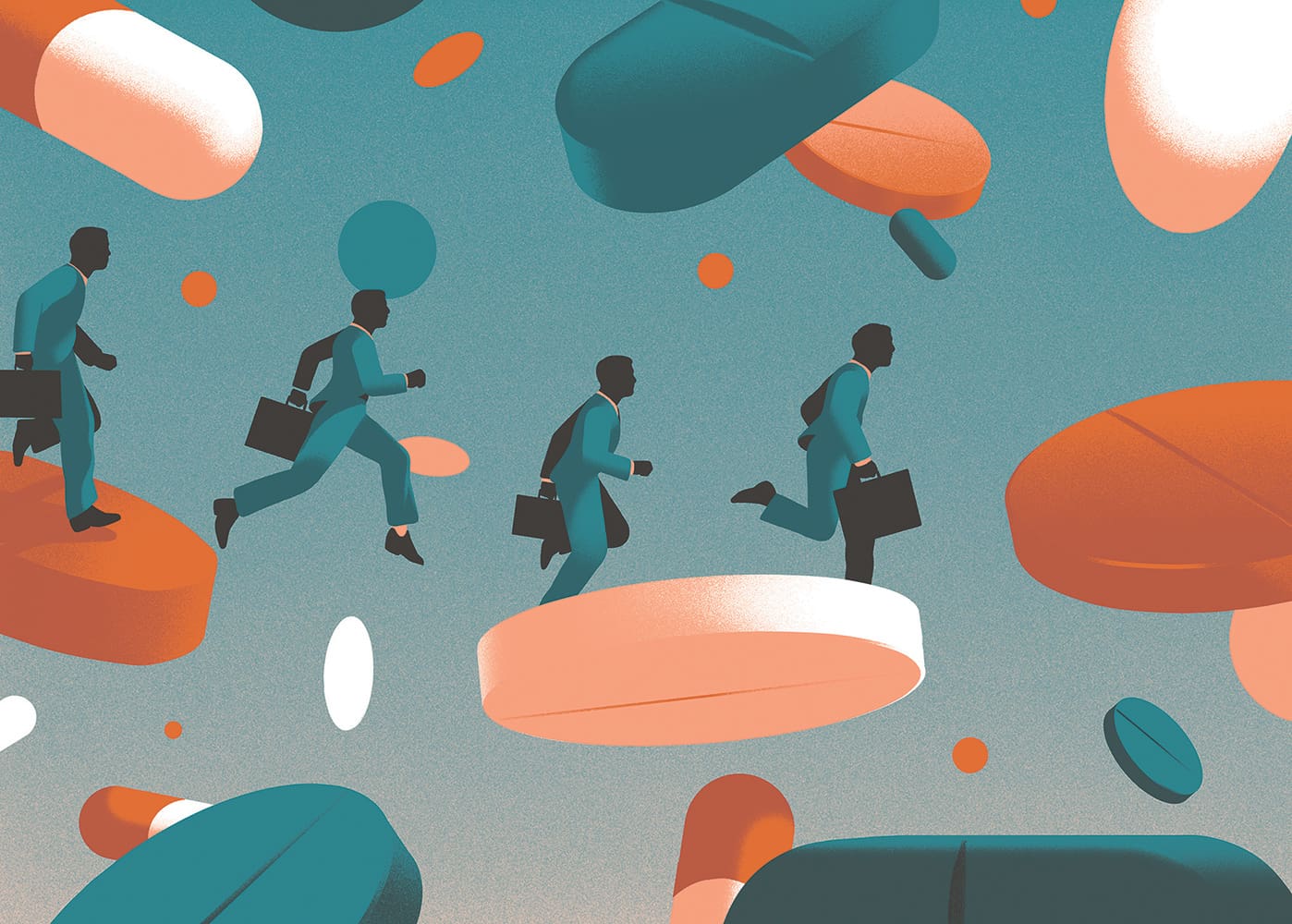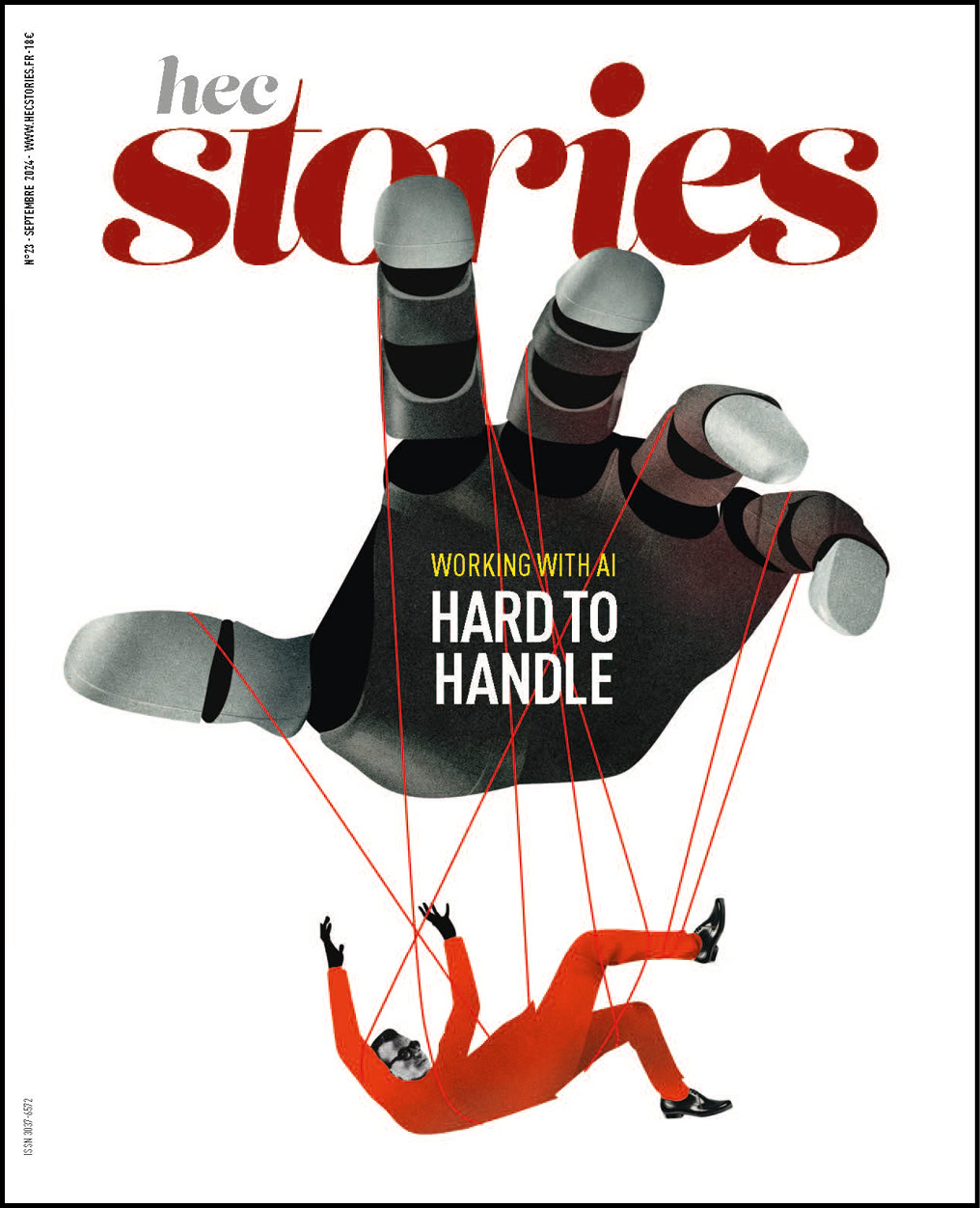10 Stereotypes about Big Pharma

1. Big Pharma aims to corrupt doctors.
Pierre Frouard, GP and a contributor to Prescrire magazine, published by the association Mieux Prescrire [Prescribe Better].
FALSE – Corruption is illegal and remains very rare. On the other hand, there are legal ways to influence doctors, for example through gifts or contracts. Since 2013, under the terms of the Bertrand law of 2011, such gifts and contracts must be listed online, and this information can be accessed by anyone, for example via www.eurosfordocs.fr. Ironically, this effort at transparency, put in place following the Mediator scandal in 2010, serves to legitimize such practices. Studies show that gift-giving induces the recipient to respond by giving something in return. The problem is that doctors aren’t always aware of how they are being influenced, and this influence can begin very early in one’s career. A medical student surrounded by doctors who accept such gifts can, little by little, come to believe that this is just standard practice. According to a study I recently coordinated, which confirms the results of earlier studies, general practitioners who did not receive any gifts between 2013 and 2016 had a better record concerning prescriptions: their prescriptions were generally both cheaper and more effective. The good news is that young doctors are becoming more and more aware of the importance of maintaining their independence.
2. Leading pharmaceuticals companies lobby to discredit unconventional medicines.
Annabelle Champagne (M.08), pharmacist, managing director and founder of Wi Pharma, an application for the distribution of pharmaceutical and related products.
FALSE – Many people believe that Big Pharma orchestrated the policy — which will go into effect in January 2021 — of not reimbursing the costs of homeopathic products. Others rank Boiron, the French homeopathy leader, as Big Pharma. Alternative medicines (the WHO recognizes 400 of them, one of which is homeopathy) are at the heart of many conspiracy theories, particularly on the internet. In fact, alternative treatments have a good reputation in France and are even used or recommended in certain hospitals. One example is oncology: acupuncture is effective in helping cancer patients relax, and burn healers can soothe or prevent the pain of skin lesions caused by radiation therapy. The current trend is for more natural products, as we can see in the strong demand for oil-lime-water ointment or organic cotton pads, both used to clean babies’ bottoms. The pharmaceutical industry doesn’t view this trend as a threat but rather as a growth opportunity.
3. Laboratories always avoid legal penalties.
Charles Joseph-Oudin, attorney, specialist in the penal code and in personal-injury law, is defending victims in the Mediator, Depakine and H1N1 flu A vaccine cases.
LESS AND LESS TRUE – In France, before the Mediator scandal, the lack of lawsuits against pharmaceutical laboratories suggested that these labs could escape any legal or financial punishment. For example, Isomeride, taken off the market by Servier in 1997, was the object of many lawsuits in the United States, with around two billion dollars awarded to victims, while France saw only 10 lawsuits. The Mediator case marked a turnaround and launched a drive to force labs to accept responsibility and to create new forms of compensation for victims (including extrajudicial efforts like victims’ funds). Today, more and more attorneys are willing to bring suits against labs. The French legal system remains friendly to industrial interests, though, thanks to problems getting access to courts, costs, lengthy procedures, conflicts of interests among experts, etc. It’s mainly a question of the disparity between the two sides: the difference in financial clout, obviously, but also a difference in time constraints, because a company can handle a long court case much more easily than a victim suffering secondary effects can. We still have a long way to go to make things truly equal, for example by making sure that laboratories, following the principle of full disclosure, cover the costs of lawsuits brought against them. In the Depakine case, we managed to make the laboratory pay the costs of experts who testified at the request of victims.
4. The pharmaceutical industry invents medical conditions.

Patrick Landman, psychiatrist and psychoanalyst, researcher and co-founder of the association Stop-DSM.
TRUE – Concerning psychiatry, Big Pharma can indeed create diseases. This discipline is an easy target thanks to its grey areas: the difference between normal and pathological is often difficult to determine. No mental-health issue produces biological markers that can be detected in blood or through an MRI. Clinical diagnosis, which is partly subjective, depends on established criteria. To give an example, a grieving person can be sad, devastated, have reduced psychomotor function, have dark thoughts, refuse to work or eat… Grief, which is part of the human condition, can look just like a depressive state. What is the difference? After six months, we could consider that grief has become pathological. But the American manual on psychiatry, the DSM [the Diagnostic and Statistical Manual of Mental Disorders, published by the American Psychiatric Association; it describes and classes mental disorders], which is very influential worldwide, has shortened this period of time in successive editions. Now, in certain cases, someone who has lost a loved one could, after two weeks, be considered not just grieving but depressed, and perhaps in need of anti-depressants. The conflicts of interest between pharmaceutical companies and the psychiatrists who contribute to the DSM have already been denounced in the American press. Links between companies and influential individuals or patients’ associations can also influence the creation of medical conditions, as can certain social expectations.
5. Big Pharma hides medicines
Geoffroy Bessaud (MBA.86), pharmacist, former executive at Sanofi
FALSE – According to the conspiracy theory of which this notion is a part, Big Pharma companies are part of a vast, labyrinthine network that includes laboratories, doctors, politicians, regulatory agencies, etc., which work together against the common good in order to make huge profits. How could such a network operate, and in particular how could it hide medicines to sell them to others at outlandishly high prices? Even though pharmaceutical companies may have conflicting interests, each wants to develop innovative remedies and to market them as quickly as possible, and even though they may establish temporary partnerships (as Sanofi and GSK did last April to combat covid 19), they remain competitors over the long term. In addition, the medical sector is becoming more and more transparent and is very carefully scrutinized (by journalists, potential whistleblowers, etc.). It’s hard to see how such a huge coalition could operate with impunity. I think that this notion comes from a belief in the pharmaceuticals industry’s “original sin”: making money out of people’s healthcare needs. In fact, while health is priceless, it does involve costs, and over the past few years, with the growing power of biotech companies, the costs of developing innovative products have been rising exponentially.
6. Big laboratories are responsible for most medical innovations
Franck Mouthon (HEC Challenge Plus), co-founder of the biotech company Theranexus and president of the association France Biotech.
NEITHER TRUE NOR FALSE – The academic world plays a crucial role: it’s responsible for most of the innovations – therapeutic or diagnostic solutions, medical devices, etc. – that reach the marketplace. On the other hand, the process of achieving medical innovations actually demands close cooperation among public research centers, big laboratories, start-ups, SMEs and mid-cap companies. Over the past 15 years, major corporations’ R&D activities have been transformed to focus on partnerships with innovative SMEs and start-ups. In fact, at a time when science and technologies are evolving really rapidly, it makes more sense for big companies to take advantage of the great diversity of innovations generated by start-ups rather than to rely only on their own internal research efforts. SMEs in the pharmaceutical sector, for example, are estimated to devote 60% of their budgets to R&D. However, even though start-ups, SMEs and mid-cap companies are very important in transferring innovations from the public to the private spheres, major corporations are still essential players, both in supporting product development and registration, and in acquiring and financing innovations.
7. Research is co-financed with public funds, but big private companies benefit the most.
Stéphane Thiroloix (H.86), founder and CEO of AlgoTherapeutix, which developed ATX01, a treatment for neuropathic pain induced by chemotherapy
FALSE – The linear R&D model, with a single player responsible for discovery through commercialization, has had its day. Healthcare innovations now involve passing the baton…and every link in the chain has its own risk-reward ratio. This transactional balance, which happens everywhere, applies to public as well as private entities, in the pharmaceutical industry as in others. Upstream, biotechs and organizations involved in basic research, which are co-financed by public funds, lack the capacity to develop or commercialize their innovations. Downstream, pharmaceutical companies have cut back on their own R&D to acquire innovations achieved by these upstream players. There’s a transaction at every stage of the process. For example, when a researcher passes along a project to a developer for a small investment, the developer obtains something that is unproven, even though supported by theories and preliminary testing. The value of this transaction is small, but the researcher reserves the right to a share in the project’s future returns, usually in the form of royalties. When, after a significant investment, the developer proves the effectiveness of the product and passes it along to an operator who will commercialize it, almost all risks have been eliminated. The value of this transaction is therefore high. The developer is compensated for any risks that have been assumed, and will benefit from the product’s commercial success through milestones and royalties.
8. Patent laws prevent people in the poorest countries from getting access to care

Catherine Giboin (H.78), vice president of Médecins du Monde (MDM), and Juliana Veras, MDM coordinator and advocate concerning prices of medicines and healthcare.
TRUE – Low- and medium-income countries did not have to recognize drug patents until 1994, the year of the World Trade Organization agreement on intellectual property (Adpic). However, the WTO allowed “least advanced countries” to benefit from a transition period that has been prolonged many times; in 2015, the end date was extended to 2033. In 2011, during the AIDs epidemic, the Doha Declaration confirmed the right of WTO member countries to benefit from patent-law exceptions “to protect people’s lives and health” (article 27) and to provide access to affordable healthcare products. Patent laws thus allowed for a series of exceptions to protect the health of the world’s poorest populations. But these exceptions were not taken advantage of. Concerning the covid 19 pandemic, it’s astonishing that one of the potential treatments (remdesivir, developed by the American laboratory Gilead) was patented as soon as clinical trials began by the African Intellectual Property Organization (OAPI), even though 13 of its member states are ranked “less advanced” and therefore exempt from observing drug patents. On April 6, Tedros Adhanom Ghebreyesus, Director-General of the World Health Organization, demanded that financial barriers to receiving care should be lifted during the pandemic, and that companies and research organizations should provide open access to their scientific data. The World Health Organization is committed to the equal sharing of medicines and proven vaccines among all countries.
9. Outsourcing is creating a shortage of medicines in France.
Dimitrios Adritsos, a graduate of UCLA and MIT and associate professor at HEC Paris.
BASICALLY TRUE – Keep in mind that the first stage in manufacturing a drug is the production of its active pharmaceutical ingredient (API), which, when combined with secondary ingredients, will result in the drug’s finished dosage form (FDF): pills, powders, etc. Even when a drug bears the name of a French company, it has probably been entirely produced outside France, in facilities run by third parties. Concerning generic drugs (which are more vulnerable to shortages), a third-party entity could, for example, produce the API in China and then ship that to India, where the FDF would be manufactured. Over the past 20 years, the pharmaceutical supply chain has evolved in order to take advantage of labor costs that are lower and environmental legislation that is less stringent than in the United States or Europe. The low margins of generic medicines have led to their production in a handful of facilities in order to take advantage of economies of scale. During the covid 19 pandemic, if the production of an API or an FDF is interrupted to avoid transmission risks, or if a country decides, for strategic or public-health reasons, to scale back exports of key pharmaceutical products (which was the case for India), there could be repercussions all over the world.
10. Leading laboratories could shift their production to new locations if they wished.
Virginie Di Vita (E.16), assistant general director of Axyntis’s fine-chemicals division.
TRUE – Relocating the production of pharmaceutical products would not be easy, but it’s possible. Our chemicals industry has survived the outsourcing strategies of leading pharmaceutical enterprises. The goal would not be to bring all activities back to France, but rather just those involving ingredients with significant therapeutic value, for example in treating cancers or neurological disorders. The move to repatriate production, which in my opinion is a good thing, is already underway, but it will take time. It requires new strategies, political decisions, and support on many levels. For pharmaceutical enterprises, repatriation is a significant challenge, because it means changing their economic model and reorganizing their supply chain in order to lessen their dependence on distant countries like China and India. To relocate their production to France, French companies could get back to the very basics in manufacturing a drug. If they obtained simple raw materials from diverse locations, companies like ours would be able to integrate their own added value, without the risk of blockages because of a healthcare or geopolitical crisis.
Published by Cyrielle Chazal

